Considering Dethatching Your Lawn This Spring?
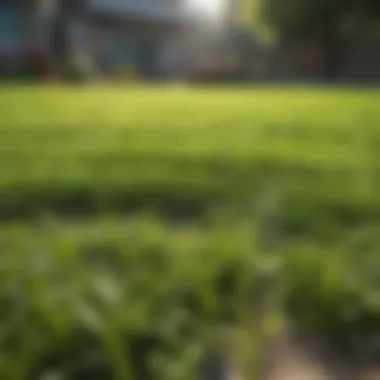
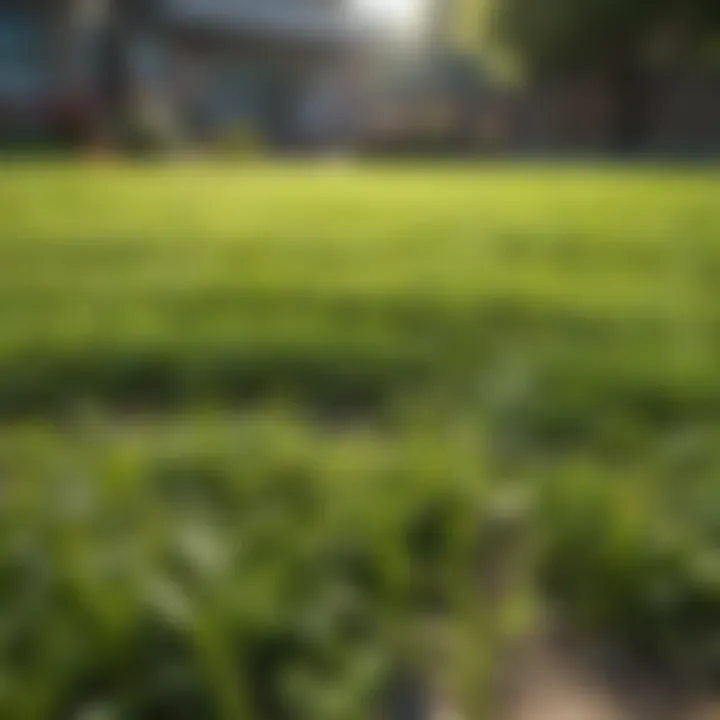
Intro
Dethatching a lawn is a topic that can send ripples through even the most seasoned gardener's heart. Questions flicker like fireflies: Is dethatching necessary? Will spring be the right time? The practice of dethatching involves removing the layer of thatch, which is the organic material that accumulates between the soil and grass blades. Too much thatch can choke out your grass, leading to unhealthy lawns. However, do you really need to jump into action as spring rolls in, or could waiting serve you better? Understanding the nuances of spring dethatching, its benefits, and its potential downsides, can guide you toward making the best decision for your unique situation.
The Case for Dethatching in Spring
Spring is a time of renewal and growth. As temperatures rise and grass begins to green, the thought of giving your lawn a fresh start is appealing. Here’s why dethatching can be beneficial during this season:
- Optimal Growth: Dethatching in spring clears away the thick layer of debris, allowing sunlight and water to penetrate the soil more effectively. This can enhance your lawn’s nutrient absorption during the growing season.
- Prevention of Pests: Thatched areas often provide cozy homes for pests and diseases. By dethatching, you reduce hiding places and create a healthier environment for your grass.
- Water Efficiency: Thatch can act like a sponge, soaking up water that might otherwise go directly to the roots. Removing it can improve water penetration in your lawn.
"While spring presents the best opportunity for dethatching, keep in mind that not every backyard requires it. A thorough examination is often needed to determine if it’s necessary."
Signs That Your Lawn Needs Dethatching
Before you grab the rake or dethatching machine, assess your lawn. Look for signs such as:
- Thick Layer of Thatch: If you notice more than half an inch of thatch, it’s likely time to dethatch.
- Poor Water Absorption: If water tends to pool on top of the grass, it could be struggling to reach the roots.
- Yellowing Grass: This could mean your grass is choking on thatch and in need of care.
The Drawbacks of Spring Dethatching
Despite its advantages, dethatching in spring isn’t always the best move for every lawn. Here are some factors to consider:
- Stress on Grass: Dethatching can cause stress to the grass, especially if done too early. If your lawns are still weak from winter, it may do more harm than good.
- Timing is Key: If dethatching is performed too early, it can lead to poor recovery as cooler temperatures can return. Waiting until the soil warms might be a better bet.
- Soil Conditions: If the ground is too wet or too dry, dethatching may cause damage instead of delivering desired results.
Alternatives to Dethatching
Sometimes, dethatching isn’t the only option. Explore these alternatives:
- Aerating: Instead of dethatching, aerating can help relieve compaction and improve soil health without removing grass.
- Top Dressing: Applying a layer of soil or compost can help improve thatch levels without aggressive dethatching.
- Regular Maintenance: Mowing your lawn to the right height and fertilizing regularly can help control thatch buildup over time.
Ending
In summary, while the notion of dethatching your lawn during spring sounds promising, it requires a certain amount of careful consideration. Assessing the condition of your lawn, understanding the timing, and weighing the pros and cons can lead to informed choices for your gardening endeavors. If in doubt, seek advice from a lawn care professional who can guide you based on your specific circumstances. A beautiful lawn is always worth the effort, even if it takes a few spring seasons to get there.
Understanding Lawn Dethatching
Lawn dethatching is an essential concept for any homeowner vested in maintaining a lush, vibrant yard. It’s a practice that can seem foreign to those new to lawn care, yet it plays a significant role in ensuring your grass stays healthy and resilient. This section aims to clarify what dethatching entails, why it matters, and what considerations you should keep in mind when thinking about this process.
What is Lawn Dethatching?
Lawn dethatching is the process of removing thatch from the lawn. Thatch is a layer of organic matter—primarily composed of dead grass stems, roots, and other debris—that can build up on the soil's surface. A certain amount of thatch is normal and even beneficial, acting like a protective layer. However, when it becomes too thick—generally more than half an inch—it can hinder water, air, and nutrients from reaching the soil beneath.
This excessive buildup can create a host of problems for your grass, like stunted growth or increased susceptibility to pests and diseases. It's essential to understand this balance as you embark on the journey to maintain your lawn.
In essence, dethatching is releasing your lawn from the shackles of this thatch layer, allowing it to breathe and thrive. This procedure can be carried out by manual tools, like rakes, or mechanical equipment designed for thatching.
The Purpose of Dethatching
Understanding the purpose behind dethatching is crucial for homeowners looking to improve lawn health. While it might sound like just another chore, dethatching serves several key functions:
- Enhances Airflow: By removing thatch, you allow air to circulate freely through the soil, which is vital for root development. Grass needs oxygen just like every living thing.
- Improves Water Penetration: A lawn free from excess thatch absorbs moisture more effectively. With an open environment, water can route deep into the roots instead of pooling on the surface, which can create surface runoff or erosion.
- Nutrient Access: Similar to water, valuable nutrients from fertilizers will penetrate deeper into the soil, reducing waste and ensuring your grass gets the nourishment it needs.
- Encourages New Growth: Removing thatch creates space for new grass growth, promoting a denser and healthier lawn.
- Pest and Disease Management: Thick thatch can create a cozy environment for pests and diseases. Dethatching unfolds the lawn, thus minimizing the risk of infestations and diseases taking root.
"A well-maintained lawn isn’t just a pleasure for the eyes; it's a foundation for a healthy ecosystem in your garden."
Each of these factors contributes to an overall healthier lawn. Therefore, it’s important to approach dethatching with thoughtfulness, ensuring you’re addressing any issues before they grow out of hand. The conversation about your lawn's health doesn’t stop with dethatching. It’s but one step; understanding its role in the broader context of lawn care is essential.
Spring: A Crucial Season for Lawn Care
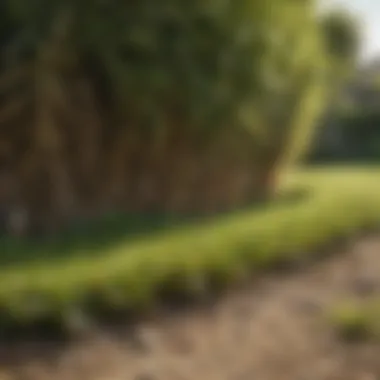
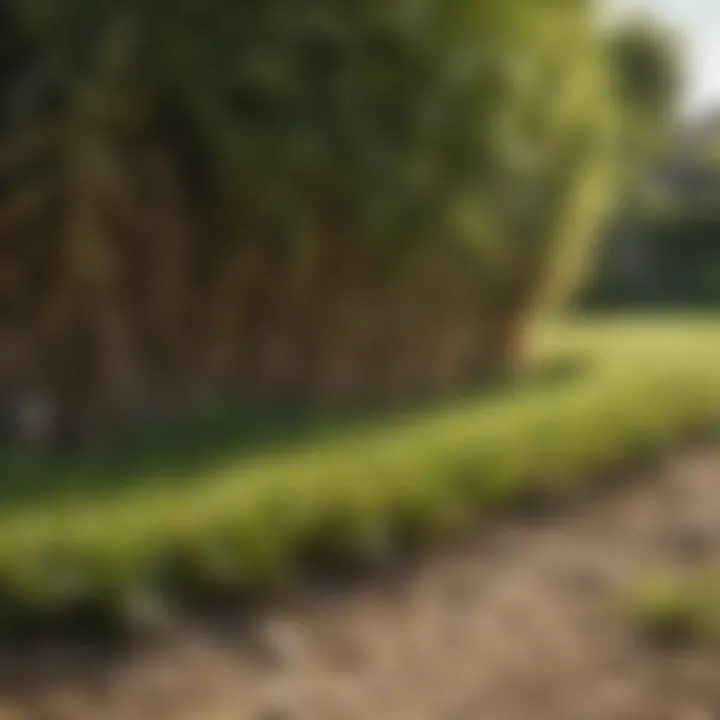
Spring is more than just a time for flowers to bloom and birds to chirp. It’s a pivotal period for your lawn, dictating its health and appearance for the rest of the year. As grass awakens from its winter slumber, it’s crucial to step up your lawn care game. The season is ripe for revitalizing your greens, making decisions on methods like dethatching especially relevant.
The right sprng lawn maintenance can usher in lush greenery, vigor, and resilience, while carelessness may lead to lackluster patches of grass or worse yet, invasive weeds. Take a closer look at why spring is so vital for lawn care and what strategies you can employ to ensure your yard thrives.
The Benefits of Spring Lawn Maintenance
When the days start to get longer and temperatures begin to climb, your lawn signals its readiness for rejuvenation. There are several advantages to being proactive during this season:
- Optimized Growth: Spring’s warming weather promotes rapid growth. Fertilizing the lawn now means the nutrients can nourish the grass just as it begins to photosynthesize effectively.
- Weed Management: Addressing weeds in spring helps to combat competition for nutrients and water. Tackling the problem early can save time and effort down the road.
- Fostering Recovery: For any areas that were damaged during the winter months, spring maintenance can stimulate recovery. This includes dethatching, which removes the dense layer of organic matter that can suffocate your grass.
As one seasoned gardener puts it, "A well-maintained lawn in the spring can be the difference between a patchy yard and a lush carpet of green come summer.” This encapsulates the idea that starting strong can create a domino effect in lawn health.
Potential Risks of Spring Dethatching
While it may seem like a good idea to dethatch your lawn as soon as the frost lifts, caution is advised. Dethatching isn’t a one-size-fits-all solution, and there are potential pitfalls to consider:
- Timing Issues: If done too early, when the ground is still cool and grass is not actively growing yet, dethatching might stress your lawn, leading to more harm than good.
- Worn Roots: Mechanical dethatching tools can be aggressive. If your grass is already struggling, this could damage the roots rather than support healthy growth.
- Environmental Factors: If the spring weather is too rainy or humid, dethatching can lead to a soggy mess, ultimately promoting disease and pest issues.
It’s essential to take a balanced approach to dethatching. Evaluating your lawn's situation carefully will ensure you're not inadvertently setting your yard back in a quest for perfection. Thus, always watch the skies and listen to your grass; it might just tell you what it needs.
Indicators for Dethatching
Dethatching is not merely a chore for garden enthusiasts; it’s a strategic move that can define the overall health of your lawn. Understanding when to dethatch is crucial, as taking this step without proper indicators may lead to more harm than good. Knowing these indicators can ensure that you maximize the benefits of dethatching while minimizing any potential risks. Here, we will discuss how to recognize thatch-related issues along with assessing the layers of thatch present in your lawn.
Recognizing Thatch Problems
To tackle thatch issues, homeowners must first identify when a problem exists. Thatch is a layer of organic matter—made from dead grass, roots, and clippings—that accumulates on top of the soil. If this layer becomes too thick, it can suffocate your lawn. So, how do you know if it’s time for some dethatching? Look for these signs:
- **Discoloration: ** If areas of your yard are turning yellow or brown, it’s a telltale sign that this layer could be too thick and depriving your grass of water and nutrients.
- **Decaying Grass: ** When your lawn starts showing patches of ragged, dying grass, it’s worth taking a peek beneath the surface. A thick thatch layer could be to blame.
- **Poor Drainage: ** If water pools or drains away slowly during rain, you might have a thatch problem blocking moisture from reaching the roots.
- Excessive Thatch Height: A quick method is to use a small soil core probe or shovel to extract a sample from different areas of your lawn. If the thatch layer is over half an inch thick, action is needed.
Recognizing these issues can save you from costly repairs later. Ignoring the signs is akin to letting a leak drip until it’s a flood.
Assessing Thatch Layers
Now that you've identified potential problems, the next step is assessing how extensive the thatch buildup is. A simple technique helps you determine the thickness of thatch layers. Here’s how:
- **Diagnostic Digging: ** Take a spade or garden fork and dig out a square foot of grass. This usually goes down to about 4 inches deep. Look at the sample closely.
- **Identify the Layers: ** Notice if you have clear layers:
- **Soil Texture: ** In addition to thickness, observe the condition of the soil underneath the thatch. Healthy soil should crumble between your fingers and feel loamy. On the contrary, if it feels hard or clay-like, it may require more than just dethatching.
- The top will be the dark, spongy thatch.
- Beneath that, you should find the soil layer.
- If the thatch appears dense and is more than half an inch thick, consider dethatching this spring.
This digging method provides clearer insight into your yard's condition, allowing you to formulate a more effective plan of action than just a surface-level glance.
"Understanding the state of your lawn is like reading a map before going on a journey. Without it, you might just end up lost!"
In summary, recognizing thatch problems and carefully assessing thatch layers enables homeowners to make informed decisions about their lawn. It allows you to act on what is necessary rather than operating on guesswork alone. Popularity may sway you to dethatch just because it's spring, but knowing the real indicators will ensure a healthier, more vibrant lawn come summer.
Types of Grass and Their Needs
Understanding the types of grass that inhabit your lawn is crucial when considering dethatching. Each variety has its own set of requirements, and knowing these can greatly influence the timing and methods for lawn care. Whether cool-season or warm-season grass, recognizing their unique growth patterns helps ensure a healthy lawn and optimizes the dethatching process. By considering the specific elements regarding types of grass, homeowners can enjoy a yard that thrives throughout the seasons.
Cool-Season Grass vs. Warm-Season Grass
Cool-season grasses, like Kentucky bluegrass and fescues, are typically most vigorous in the spring and fall. They flourish in the cooler temperatures of these seasons and experience a dormancy period during the summer heat. On the contrary, warm-season grasses such as Bermuda and zoysia thrive when temperatures rise, coming to life in late spring and locking into dormancy during winter.
When planning dethatching, it's essential to consider these growth cycles. Dethatching on cool-season grasses should ideally occur in early spring or early fall, just when the grass begins its growth spurt. This timing allows for quick recovery and benefits from the natural growth cycle.
In the case of warm-season grasses, the perfect window for dethatching lies in late spring, right before the grass starts making its heavy growth push. Failing to align dethatching with these periods may lead to stress on the grass, causing setbacks that may take weeks, or even longer, to recover from.
Suitability for Dethatching
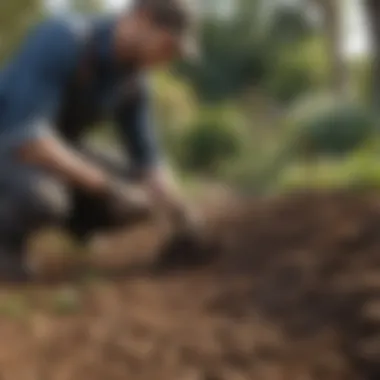
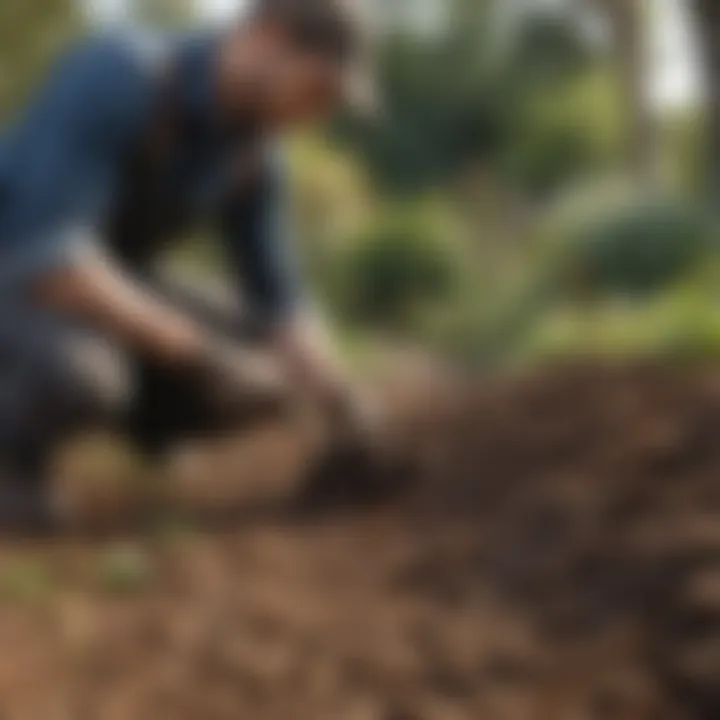
Not all grass types require dethatching, and assessing suitability is vital. Healthy lawns can withstand some thatch accumulation, but when the buildup exceeds half an inch, action may be needed. For cool-season grasses, moderate thatch can hinder water absorption and nutrient uptake, leading to unhealthy patches. Meanwhile, warm-season grasses tend to handle thatch better, although excessive buildup can still impede their vigor.
When determining whether your lawn is ready for dethatching, consider the following:
- Grass type: Some grasses thrive under a bit of thatch, while others may require more stringent measures.
- Thatch depth: Use a trowel to check how thick the layer of thatch is. If it’s more than half an inch, it’s time to rethink your lawn care strategies.
- Current health of lawn: Assess if other factors, like pests or diseases, could be affecting the well-being of your grass. Dethatching can be counterproductive if the grass is already struggling.
"Lawn care isn't just about looks; it's about understanding the needs of what's growing beneath the surface."
Always remember, effective lawn care isn’t a one-size-fits-all solution. By tailoring your dethatching practices to the specific type of grass in your lawn, you pave the way for resilience, better health, and ultimately a lush green yard.
Environmental Considerations
When discussing the intricacies of lawn care, particularly dethatching, it is vital to consider the environmental factors that play a critical role in determining when and how to perform this task. This includes understanding soil temperature and moisture levels, as well as the ever-fluctuating weather conditions that can significantly impact the effectiveness of dethatching methods.
For homeowners, skimming over these details could lead to unnecessary damage or fail to achieve the lush, healthy lawn they desire. So, let’s dive into the aspects that matter perhaps more than you may think.
Soil Temperature and Moisture Levels
Soil temperature is akin to a thermostat for your lawn's health. This temperature influences when grass starts to grow and can effectively dictate the optimal timing for dethatching. If the soil is too cold, grass roots are not ready for such disturbance, which could leave your lawn worse for wear. Healthy soil typically warms to about 50°F (10°C) for cool-season grasses and a bit higher for warm-season varieties. Keeping tabs on soil temperature can make or break your dethatching plans.
The moisture level is equally significant. Think of your lawn like a sponge—overly dry ground makes equipment work harder, potentially pulling up more than just thatch. On the flip side, if the soil is soggy, dethatching could lead to mud and mess instead of manageable thatch. A sweet spot exists when the moisture content is balanced, allowing for effective dethatching without unintended consequences. Remember, you want the grass and underlying roots to be resilient, not stressed.
- Check your local climate conditions to gauge the right moment.
- Perform a simple moisture test by digging a small section to assess how your soil feels.
"Finding the right balance in soil conditions is not just a tip—it's essential for thriving grass."
Weather Conditions and Timing
Weather can be capricious, and staying attuned to it is crucial for your dethatching strategy. A sunny day may look inviting, but if rain is on the horizon, consider postponing your plans. The soil’s structure can change post-rain, making dethatching unnecessary and messy.
Furthermore, wind patterns can carry dried thatch elsewhere, potentially leaving the task half done if not accounted for. The timing of dethatching is as much about understanding broader environmental trends as it is about soil conditions. For instance, knowing when your area has experienced a seasonal shift can inform you if it is time to engage the dethatching tools.
- Keep an eye on forecasts for rain or fluctuating temperatures.
- Timing your dethatching for early spring can harness optimal grass growth and ensure healthier recovery.
The interplay between these factors isn't just academic; it's an essential consideration that every homeowner should recognize to maintain a resilient lawn. With proper awareness, you'll not only enhance your chances of effective dethatching, but you'll also contribute to long-term lawn vitality.
Dethatching Techniques
Dethatching techniques are a vital consideration for any homeowner looking to maintain a lush and healthy lawn. Understanding the right methods not only aids in managing thatch levels but also prevents potential lawn damage. The main goal here is to effectively eliminate excess thatch without stressing your grass too much.
Manual vs. Mechanical Dethatching
When it comes to dethatching, homeowners often debate between manual methods and mechanical dethatching.
Manual dethatching typically involves a thatch rake or dethatching rake. This process is labor-intensive but can be beneficial for small areas or specific spots that might need more focused care. It's akin to picking weeds by hand; it allows for a more careful examination of the lawn's health as one works directly on the grass. Additionally, manual dethatching generates less disturbance, preserving soil structure, which is incredibly important for lawn health. However, this method may not be practical for larger yards since it can take quite a bit of time and energy.
Mechanical dethatching, on the other hand, employs specialized equipment like dethatching machines or power rakes. These machines work quickly, covering larger areas in a fraction of the time compared to manual methods. They use rotating blades or tines to penetrate the thatch layer, effectively uprooting it. However, it's crucial to use such machines judiciously. There’s a notable risk that they can aerate or damage the soil too much, especially if the ground is dry or compacted.
In summary, the decision between manual and mechanical dethatching often depends on your yard size, physical capability, and personal preference. Each method has its own merits and considerations, and the choice can be as crucial as the dethatching itself.
When to Dethatch: Timing Strategies
Timing plays a significant role in the success of dethatching. The ideal time frames tend to hinge on grass type, local climate, and individual lawn conditions. For cool-season grasses, the sweet spot for dethatching often falls in early spring or early fall, when the grass is most actively growing and can recover more quickly from the stress of dethatching.
Alternatively, warm-season grasses benefit from dethatching in late spring or early summer, right before their peak growing season begins. This helps to ensure that the grass has enough time to bounce back and thrive.
Consider these factors to determine the best timing:
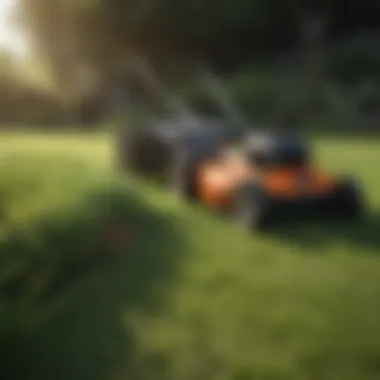
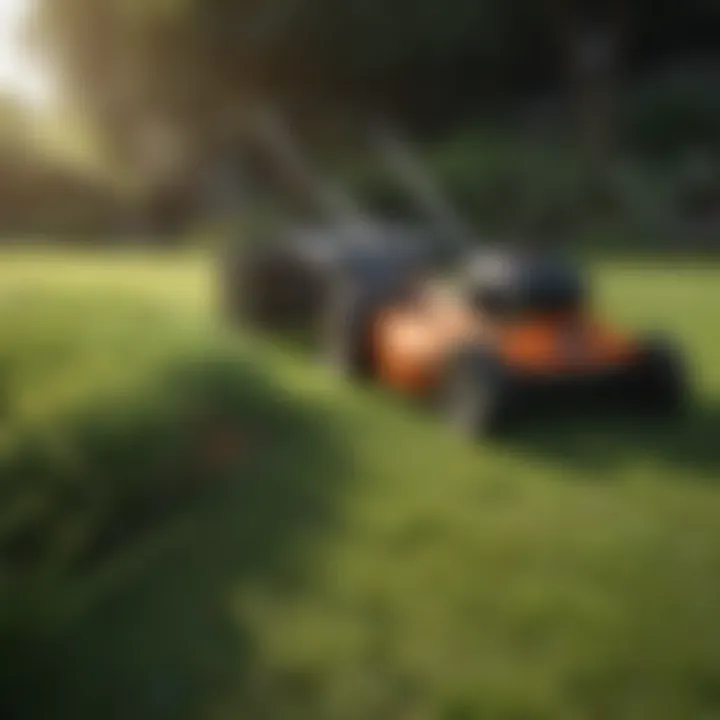
- Soil and weather conditions: Dethatching is ideally done when the soil is moist but not overly saturated. Wet soil helps prevent damage while allowing easier tines to penetrate into thatch layers.
- Grass health: Make sure to assess the health of your lawn before dethatching. If the grass is stressed from drought or disease, it’s best to wait.
- Visual Indicators: Understanding your lawn’s appearance can also guide you. If your grass has become patchy or there’s a consistent layer of dead grass on top, it’s a sign that dethatching may be necessary.
"Proper timing not only promotes recovery but enhances the effectiveness of dethatching process, leading to a healthier lawn overall."
A thoughtful approach to when you dethatch along with the chosen method can lead to a significant improvement in lawn health. Taking all these considerations into account helps create a comprehensive strategy that fosters a vigorous lawn, ready to withstand the rigors of changing seasons.
Post-Dethatching Care
Taking care of your lawn after dethatching is like giving it a second chance at life. It’s not just about ripping up the thatch; it’s what you do next that really counts. Dethatching exposes your lawn’s soil and roots to the elements, and without proper post-care, your grass might struggle to bounce back.
Fostering Lawn Recovery
After you’ve dethatched, the lawn can look a bit rough around the edges. Grass plants may feel like they’ve been through the wringer, but don’t lose heart. The key here is recovery and care. To help your lawn bounce back strong:
- Watering: Start off with a good soak. Give that freshly dethatched lawn a deep watering. Keeping the soil damp promotes healthy growth.
- Mowing: Avoid cutting your grass too short immediately after dethatching. A higher mow means that the grass will have more leaves to take in sunshine and produce energy.
- Seeding: If the dethatching created bare patches, consider overseeding. This practice fills in those gaps and aids in even recovery.
- Patience: Recovery takes time. Give your lawn some breathing room and allow it to grow back naturally without fussing over it.
"The grass won't always be greener, but with the right care, it will sure be healthier!"
These steps not only encourage regrowth but also strengthen the root system. The aim is for those grass roots to dig deep and fortify themselves against future challenges, be it drought or heavy traffic.
Fertilization and Aeration
Once the grass starts showing signs of life again, it’s time to consider fertilization and aeration as an integral part of your post-dethatching strategy.
- Fertilization: Applying a balanced fertilizer can work wonders. Choose a slow-release formula to feed your lawn gradually. This ensures that your grass gets nutrients over an extended period, without overwhelming it.
- Aeration: If you haven't aerated your lawn, now is a smart time to do so. Aerating improves air circulation and enhances nutrient uptake. It can help prevent future thatch buildup by breaking up compaction in the soil.
- Monitoring Soil Health: Get into the habit of checking soil health regularly. Understand the nutrient needs specific to your grass type and region. A soil test kit can be immensely helpful.
Post-dethatching care is much like tending a garden after a harsh winter. It’s essential to nurture your lawn during this critical period to ensure long-term health. Doing this right matters significantly when it comes to enjoying a thriving green space.
Alternative Solutions to Thatch Buildup
Understanding the various strategies available for managing thatch can be just as crucial as knowing when to dethatch. A proactive approach not only can prevent thick layers of thatch from forming but also enhances overall lawn health. These alternative solutions extend beyond traditional dethatching methods, offering homeowners effective and holistic ways to maintain a healthy green space.
Preventative Measures
Preventing thatch buildup starts with good lawn habits. Here are some practical measures:
- Proper Mowing: Keeping your lawn at the right height helps grass grow strong and resist pests and diseases. Avoid cutting too short; it can stress the grass and lead to thatch.
- Even Watering: Water your lawn deeply but infrequently. Overwatering can promote thatch, while uneven watering may leave stress points that allow it to grow.
- Timely Aeration: Aeration involves perforating the soil to allow air, nutrients, and water to penetrate deeper. This encourages root growth and helps reduce compaction, which can exacerbate thatch issues.
- Quality Fertilization: Applying the right type and amount of fertilizer can promote healthy grass growth, minimizing thatch from dead grass and other debris. Stick to slow-release fertilizers to avoid a sudden surge of growth.
- Utilizing Mulch: Grass clippings can be left on the lawn as mulch. This organic matter adds nutrients back into the soil without contributing to thick thatch layers, as they break down more quickly than other materials.
Incorporating these preventative measures can avoid headache down the line, promoting a resilient lawn that thwarts thatch buildup effectively.
Integrated Lawn Care Practices
A well-rounded lawn care system can significantly mitigate thatch buildup. Here are some practices:
- Soil Testing: Know your soil type, pH level, and nutrient availability. A soil test can guide you on tailored treatments, including amendments that encourage healthy grass without leading to excess thatch.
- Diverse Planting: Mixing different types of grasses can also stabilize your lawn environment. Diverse root systems can compete better with thatch formations, keeping your lawn lush and green.
- Companion Planting: Consider pairing grass with other ground covers. Some plants can help prevent invasive thatch from overwhelming your lawn while also offering habitat for beneficial insects.
- Regular Maintenance: Setting a maintenance schedule and sticking to it creates a consistent environment. This includes regular aeration, overseeding, and appropriate watering practices.
- Monitoring Grass Health: Keep an eye out for pest infestations or diseases. Early detection and treatment can prevent larger complications that often result in dead grass and consequent thatch buildup.
"An ounce of prevention is worth a pound of cure." - This saying holds particularly true for lawn care.
By taking an integrated approach to lawn care, homeowners can foster a healthier lawn ecosystem that reduces the chances of thatch buildup. It becomes clear that consistent, mindful practices focused on both prevention and maintenance can have lasting positive effects, allowing your lawn to thrive without the complications of excess thatch.
Finale
In summing up the discussion about dethatching your lawn in the spring, it’s essential to emphasize that this practice is not one-size-fits-all. The decision really hinges on a myriad of factors, each adding a layer of complexity to an already intricate dance of lawn care.
Making Informed Decisions for Lawn Health
Understanding the nuances of lawn health requires keen observation and careful thought. One factor, among many, to consider is the current state of your grass. If it’s a cool-season type, like Kentucky bluegrass, it might benefit from dethatching in early spring. Meanwhile, if you’re working with warm-season grasses, consider waiting until late spring or early summer.
Another critical aspect revolves around assessing the thatch layer itself. Is it more than half an inch thick? If so, that’s usually a clear sign that your lawn needs attention. However, tackling dethatching isn’t just about the current condition; it also requires foresight. Think long-term. How does dethatching fit into your broader lawn care strategy, including aeration and fertilization?
Remember the role of soil health, too. A well-balanced soil structure will lead to a resilient lawn, reducing the chances of thatch accumulation down the road.
"A little prevention goes a long way. Regular maintenance can save you the headache of heavy dethatching later on."
Ultimately, making informed decisions about lawn care means weighing all elements. Each lawn is as unique as the person tending it. So, take the time to assess your specific circumstances. Engage with resources – reach out to forums like reddit.com or browse articles on britannica.com to gain different perspectives. The more informed you are, the better choices you can make for a lush, thriving lawn.







